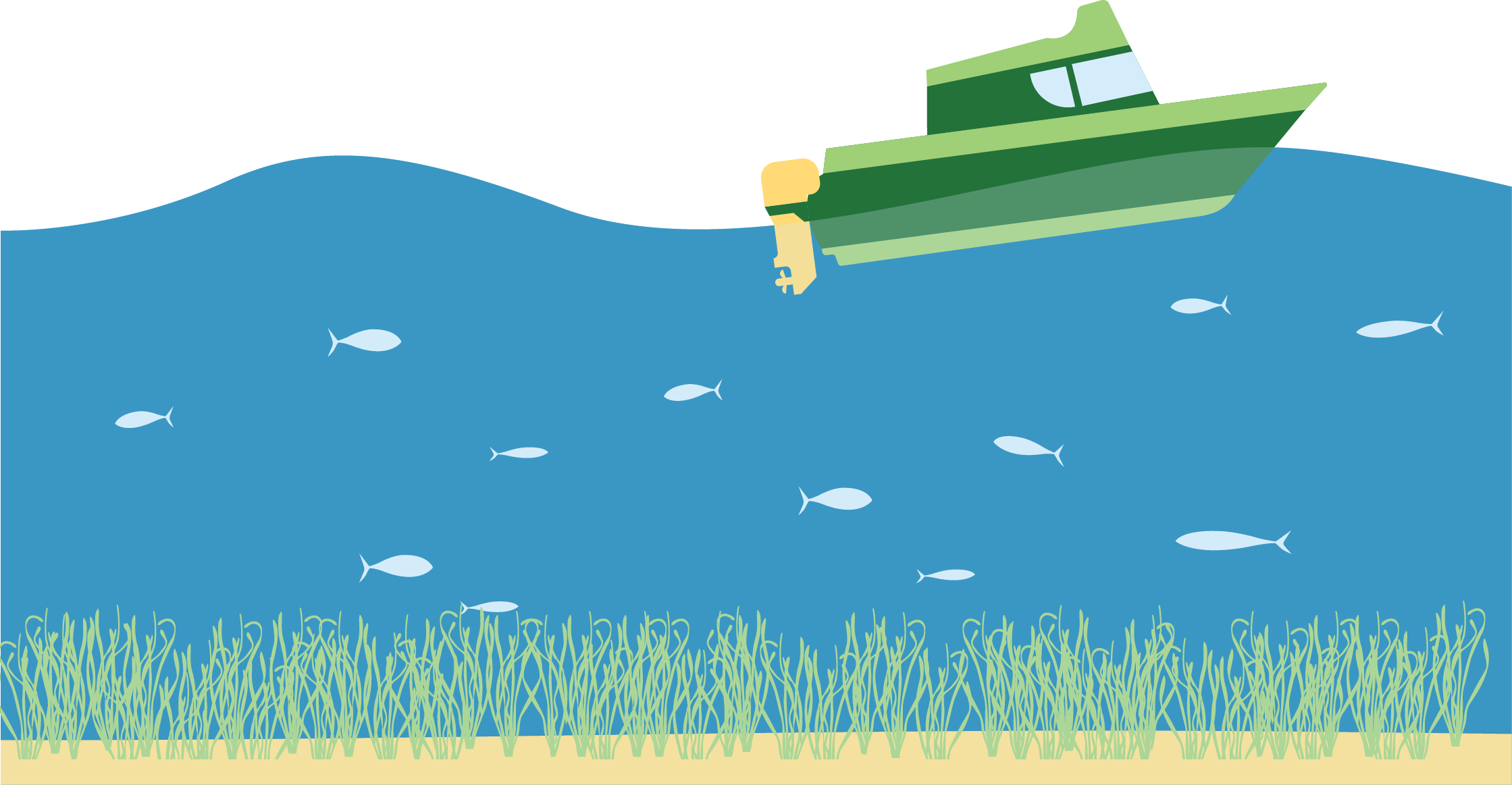
Fishers Island Eelgrass
Discover how you benefit from submerged aquatic vegetation.
Seagrass Fact Cards
Eelgrass Works For You!
History of Eelgrass in Long Island Sound
Where has eelgrass been? What went wrong? Where is it now? How has it recovered in some places but not others?
What is Killing Eelgrass?
-

Climate Change
Water temperature plays a critical role in water habitability by eelgrass. Temperatures exceeding 22°C cause the plant to be less productive and excessive exposure or heat indexes will kill it. The highest recorded water temperature on Fishers Island was nearly 23°C in 2021. The best idea scientists have to combat this threat is to transplant heat tolerant eelgrass from the Southeastern coast in Long Island Sound.
-

Nitrogen Pollution
On Fishers Island we have control over two main sources of nitrogen pollution: septic and fertilizer. Septic systems were not created to contain nitrogen leakage, so your septic may be fully functional but still contributing to nitrogen pollution. Only a specialized advanced nitrogen filtration septic system upgrade can prevent this damage. When fertilizer application is excessive or timed inappropriately the run-off will drain straight into our waters and fuel algal blooms and weaken the health of our eelgrass.
-

Boating Damage
Boating damage is caused by anchors, propellers, and running aground. Plants that are uprooted are killed. Fragmented habitats result in less biodiversity, which means fewer recreational fishing and snorkeling opportunities. Further, poor boating practices release sediments into the water column. When sediment enters the water column, previously trapped carbon and nitrogen pollutes the waters and cloudy waters block light from reaching the plants.
-

Construction
Construction in or near marine environments can shade eelgrass and disturb the sediment leading to cloudy waters. Eelgrass is a plant that requires a lot of light; decreasing the available light is detrimental to its health.






